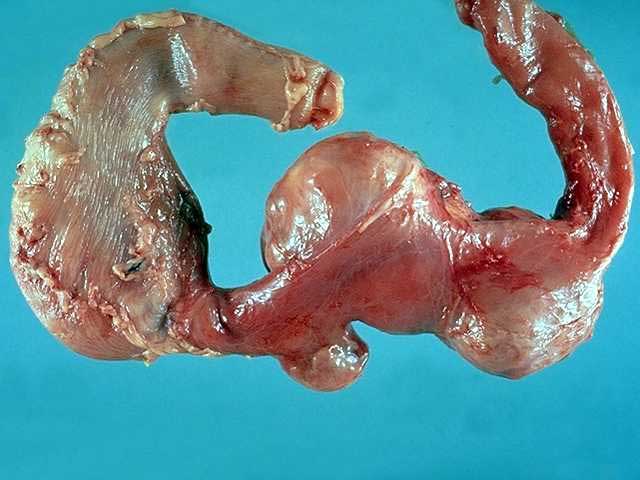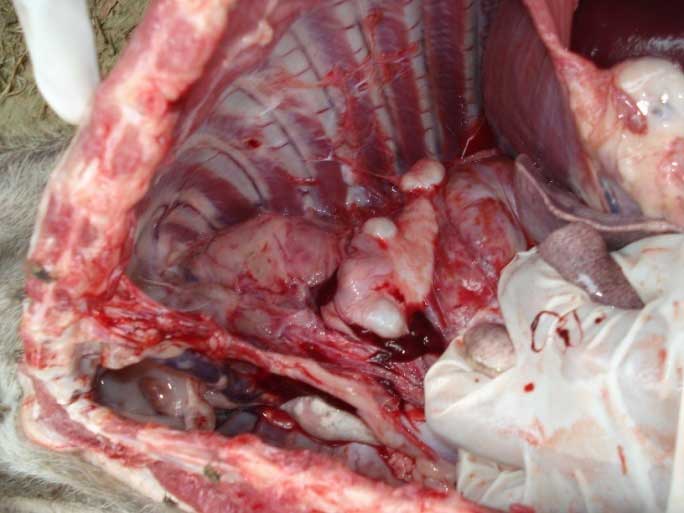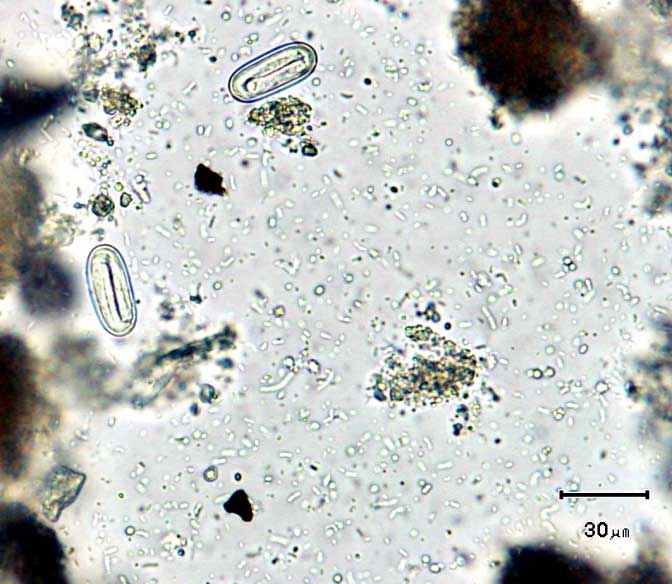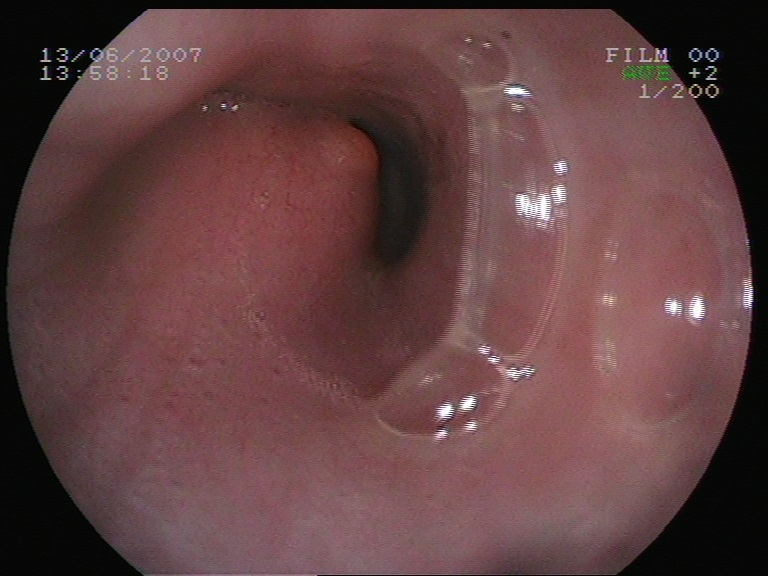Oesophageal Worm
(Spirocerca lupi)
Spirocerca lupi is a grossly underestimated and potentially fatal spirurid nematode of domestic and wild canids. Dogs become infected when they ingest intermediate (dung beetles) or transport hosts (e.g. chicken offal, reptiles and rodents).
Distribution
Spirocerca lupi is widely distributed in tropical and subtropical regions of Asia, Oceania, Latin America, the Caribbean, Africa and the Middle East.
Clinical signs
Infected dogs may initially be asymptomatic butcan progress to having regurgitation, vomiting, melena, wasting and weight loss as a result of the granulomatous masses in the oesophagus and stomach (Fig 1). Aortic migration of larvae may lead to pleuritis resulting in coughing, retching and dyspnoea. Aortic aneurysms (Fig 2) may occasionally rupture causing thoracic haemorrhage and sudden death. Fibrous nodules in the oesophagus and stomach may undergo malignant transformation and progress to oesophageal sarcoma with secondary metastases. HypertrophicHypertrophic osteopathy with front leg periosteal calcification is commonly found associated with a thoracic space occupying lesion in dogs with S. lupi-associated neoplasia.

Figure 1 Infection with Spirocerca lupi can cause granulomatous masses in the oesophagus and stomach. (Image credit: The University of Melbourne parasitology image library)

Figure 2 Aortic aneurisms in a dog caused by larvae of migrating Spirocerca lupi. (Image credit: Dr.. R. Traub)
Diagnosis
Faecal egg shedding is intermittent or absent if nodules lack a fistula. Detection of characteristic ellipsoid embryonated eggs (small, 35 × 15 μm) in faeces (Fig 3) by standard flotation (SOP 1) using a solution with S.G. > 1.20 is optimal. Primary radiological lesions include a mediastinal mass, usually associated with the terminal oesophagus. Spondylitis of the thoracic vertebrae is frequently found on chest radiography. Contrast radiography and computed tomography are helpful additional emerging modalities. Oesophageal endoscopy has a greater diagnostic sensitivity than radiography (Fig 4). PCR of faeces has also been shown to be helpful in the diagnosis of S. lupi infection [1].].

Figure 3 Embryonated Spirocerca lupi eggs on faecal flotation. (Image credit: Dr. T. Inpankaew)

Figure 4 Spirocerca lupi granuloma in dog oesophagus viewed on endoscopy. (Image credit: ProfDr. G. Baneth)
Treatment
Treatment is challenging as adults are protected within nodules. Off-label anthelmintic regimes have been shown effective in killing adult worms and reducing the size of granulomas. These include:
- Doramectin 400 μg/kg subcutaneously every 14 days for a total of 6 treatments, followed by 20 additional monthly injections if resolution of nodules is incomplete [22].
- Oral milbemycin 0.5 mg/kg on days 0, 7 and 28 and then monthly [33].
- Topical moxidectin plus imidacloprid weekly for 19 weeks [44].
Food intake may be attempted in an upright standing position in the case of regurgitation due to megaoesophagusmegaoesophagus.
Control
Monthly application of topical moxidectin plus imidacloprid is approved for use in dogs as a preventative for S. lupi infection in Europe.
Dogs should be not allowed to roam outdoors unsupervised or allowed to prey upon paratenic hosts such as rodents, lizards and frogs. For further control options, refer to the General Considerations and Recommendations section.
Public health considerations
None.
References
[1] Rojas A, Segev G, Markovics A, Aroch I, Baneth G. Detection and quantification of Spirocerca lupi by HRM qPCR in fecal samples from dogs with spirocercosis. Parasit Vectors. 201710::435.
[2] Lavy E, Aroch I, Bark H, Markovics A, Aizenberg I, Mazaki-Tovi M, Hagag A, Harrus S. Evaluation of doramectin for the treatment of experimental canine spirocercosis. Vet Parasitol. 2002;109:65-73.
[3] Kelly PJ, Fisher M, Lucas H, Krecek RC. Treatment of esophageal spirocercosis with milbemycin oxime. Vet Parasitol. 2008;156:358-360.
[4] Austin CM, Kok DJ, Crafford D, Schaper R. The efficacy of a topically applied imidacloprid 10 % / moxidectin 2.5 % formulation (Advocate(R), Advantage(R) Multi, Bayer) against immaturei and adulta Spirocerca lupi worms in experimentally infected dogs.. Parasitol Res. 2013;112 Suppl 1:91-108.
